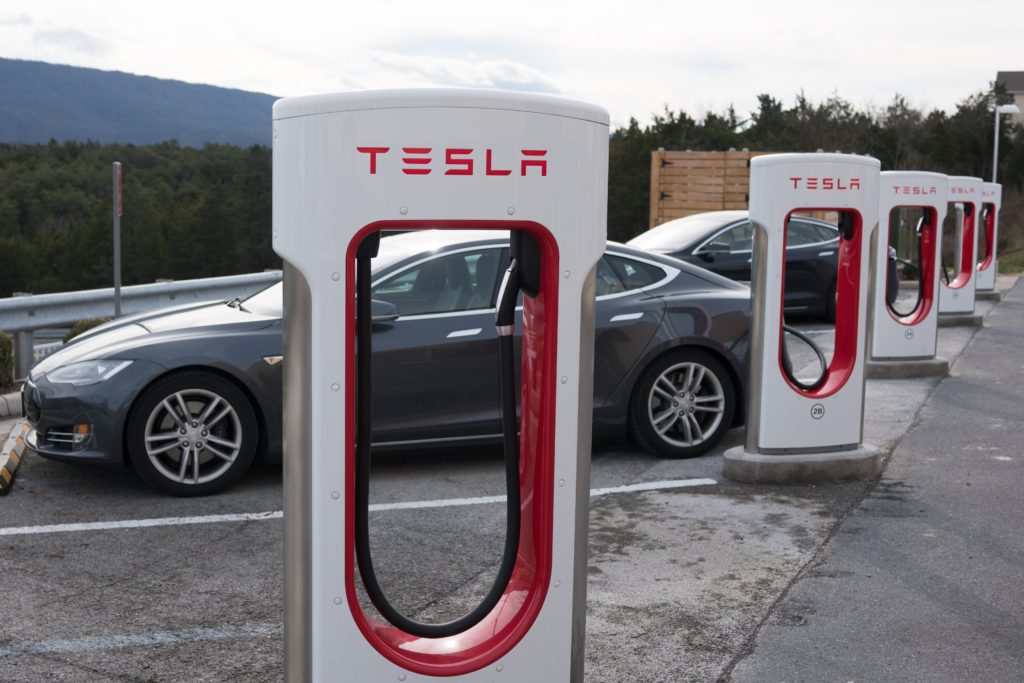
In a February essay in Policy Options, I argued that a fixation on emissions pricing was reducing Canada’s chances of climate policy success. My point was that effective climate policies are never political winners and that because a carbon tax is especially difficult, our federal government should also pursue less politically challenging policies that have been effective at reducing emissions in Canada and elsewhere.
Effective is the operative word. It’s easy for ineffective environmental policy to be politically successful, as Brian Mulroney, Jean Chrétien, Stephen Harper and various provincial premiers have demonstrated for over a quarter of a century. Voluntary challenges, efficiency labels on furnaces and appliances, government R&D, subsidies for electric cars and home insulation, and even public investments in transit, don’t compel anyone to do anything – and are thus mostly ineffective. When it comes to reducing greenhouse gases (GHGs), to be effective it would require one of three policies: increasingly stringent regulations on technologies and fuels, a rising carbon tax, or a falling absolute cap on emissions. Any of these, or a combination, would do. But we must have at least one. And its stringency must increase over time if it is to reach a target.
While policy effectiveness is essential, so too is political acceptability. To assess this, we might learn from two decades of climate policy efforts. In a 2015 Policy Options article, my colleague Jonn Axsen described our research on the climate policies adopted in British Columbia in 2007-10. That province took a shotgun approach, implementing a mix of compulsory and noncompulsory policies in quick succession, and these policies had various costs and varying degrees of effectiveness and political acceptability.
We surveyed British Columbians on these policies and found that emissions pricing, especially the carbon tax, performed far worse than regulations in terms of political acceptability, something that most politicians seem to know instinctively. Little wonder that emissions pricing has not been the lead policy in even jurisdictions that have achieved some climate policy effectiveness.
So, what sorts of effective climate change policies would be less politically difficult than a carbon tax? In my February article, I provided several examples of effective regulatory policies. I’ll focus on just one here: a flexible vehicle-emissions regulation that would require vehicle sellers (manufacturers and retailers) to grow the market share for partial-zero-emission vehicles (PZEVs) and zero-emission vehicles (ZEVs).
For PZEV, think Chevy Volt, plug-in Toyota Prius, or perhaps cars whose fuel must be 85 percent ethanol. For ZEV, think Nissan Leaf, Tesla, or a biodiesel pick-up truck.

To meet its promise at last year’s Paris climate summit, the Trudeau government will need a carbon tax that rises rapidly from its current level of $0 to $30 per tonne of CO2 (depending on the province) to $160, country-wide, by 2030. This would ultimately increase the price of gasoline by at least 40 cents per litre. This rising price would incentivize new car buyers at a rapidly increasing rate to opt for electric or biofuel vehicles, resulting in dramatic reductions in oil consumption and GHG emissions, especially in the 2020 to 2030 timeframe.
As I predicted in my February article, Trudeau could not convince all the premiers at a March meeting to agree on even a low carbon price. The message at that meeting was clear: if the Prime Minister wants to use emissions pricing to meet climate targets, he will pay the political price. The result of the March impasse was typically Canadian: Trudeau and the premiers created study committees.
Hopefully, at least one of these committees is exploring approaches to rapidly reducing vehicle emissions, and ones that don’t require political suicide. If so, our politicians might actually implement effective policies that shift key sectors of our economy to the much-needed low-emission trajectory. If the provinces don’t agree, the federal government must go it alone. Either way, the vehicle policy I propose should be implemented at the federal level.
What would this proposal look like? Sellers of vehicles in Canada would be required to achieve an annually growing share of PZEV-ZEV vehicles. By 2020, 10 percent of new vehicles should be PZEV-ZEV. By 2030, the PZEV-ZEV share should reach 70 percent. They would pay a $10,000 fine for each conventional-fuelled vehicle sold that keeps them from meeting their target.

This type of policy is sometimes referred to as a niche market regulation, because it guarantees an initially small but growing market share for transformative technologies, which would otherwise have great difficulty unseating gasoline and diesel incumbents. While the policy creates an incentive that drives industry R&D, product development and marketing by industry players resulting in significant emissions reductions, it does not stipulate a specific technological outcome. Because of this flexibility, the regulation mimics many of the innovation, investment and consumer-choice attributes of carbon taxes or emissions permit prices in a cap-and-trade system.
While the regulation might initially stipulate a 50/50 split between the PZEVs and ZEVs sold and calculate emission reductions on that basis, vehicle sellers could shift this ratio, and even the size of the niche market, as long as the same overall effect on emissions is achieved. Thus, if more ZEVs than PZEVs are sold, the combined market-share target in 2020 could be reduced from 10 percent to, say, 8 percent. Conversely, if PZEVs dominate, the target would be raised above 10 percent. And vehicle sellers could trade among themselves in achieving the overall PZEV-ZEV market outcome. Since all Tesla vehicles are zero emission vehicles, in 2020 that company would have surplus credits from 90 percent of its vehicles sold, which it could then sell to other manufacturers who might find it cheaper to purchase these from Tesla than to develop their own ZEVs in time for this near-term deadline.
Would this policy be politically easy to implement? It certainly would not. Like all effective climate policies, it would meet resistance. Many vehicle manufacturers and retailers would argue that they cannot possibly achieve the sales requirements, because not enough consumers will buy PZEVs and ZEVs. They would try to convince voters that government is engaging in social engineering, forcing people to buy vehicles they don’t want.
This would not be true. However, as in war, truth is the first casualty in climate policy. So government would have to stick to its guns. And difficult as this might be, it would be far less difficult than defending a rapidly rising carbon tax that attracts hostile media attention with each increase.
To avoid the $10,000 penalty, vehicle manufacturers would have to market PZEVs and ZEVs vigorously, working hard to attract new buyers motivated by environmentalism, a love of new technologies or a quest for status. Manufacturers would also have to innovate in order to lower production costs (and improve battery performance in the case of electric vehicles) to ensure that these vehicles were increasingly attractive to a wider market. And if the marketing and innovation efforts were insufficient, sellers would have to cross-subsidize; i.e., charge a modest premium for many conventional vehicles in order to lower the price of PZEVs and ZEVs below their full production cost.
In 2020, when the niche market would be only 10 percent, a mark-up of $100 on all gasoline vehicles would be sufficient to lower the asking price of the relatively small number of PZEVs and ZEVs significantly. In 2030, when the niche market would be 70 percent, the price increase on conventional vehicles would need to be greater to cross-subsidize sales of the PZEVs and ZEVs. But this might not be necessary if, during the decade, vehicle manufacturers had managed to lower production costs in their aggressive efforts to capture the greatest share of the rapidly growing PZEV-ZEV niche, while prospective buyers had become more confident with these technologies, thus needing less of a price inducement. And all of this would have happened without government imposing rapidly rising carbon taxes.
Manufacturers would also have to innovate in order to lower production costs to ensure that these vehicles were increasingly attractive to a wider market.
Carbon tax advocates argue that their policy stimulates the innovations that lower the costs of GHG reduction. So does the proposed PZEV-ZEV regulation. Carbon tax advocates also argue that their policy lets the market decide on technological winners. So does the PZEV-ZEV regulation. While we know that the market share of near-zero-emission vehicles must grow rapidly over the next two decades, we don’t know how manufacturing costs and consumer preferences will evolve in determining the mix of pure-electric, plug-in hybrid electric, hydrogen-fuel-cell, ethanol, or biodiesels. The PZEV-ZEV regulation would let the market decide, as producers compete for customers in the rapidly expanding low- and zero-emission vehicle market that we know we must have if we are going to meet our emission commitments.
Emissions pricing advocates also argue that carbon tax revenues, or auction revenues from permit auctions under cap-and-trade, can be used to compensate those who are most adversely affected by climate policy. True, the PZEV-ZEV regulation would not generate government revenues for this purpose. But because the PZEV-ZEV regulation would allow for a wide range of vehicle types, including gasoline vehicles, sellers could continue to price-compete for lower income consumers. Rather than occurring through the government’s carbon tax regime, transfers between income groups would occur between consumers of different types of vehicles, through the longstanding auto industry practice by which above-cost revenues from luxury vehicles and frivolous options on standard vehicles enable lower prices for the basic models that are marketed to budget-conscious consumers.
Now comes the fun part. If you have concluded that I think my PZEV-ZEV regulation would be superior to the carbon tax, you have completely misread this article. Let me go through some of the textbook arguments that would likely be regurgitated for why the carbon tax is economically superior to my proposed regulation.
First, because my PZEV-ZEV would not increase the price of gasoline, it would provide minimal incentive for people to drive less or switch to low-emission alternatives like transit and cycling. We would need additional policies to achieve these goals. But even in jurisdictions that have carbon pricing (these prices being very low because of the political constraints), governments invest in transit, bike paths and restrict vehicle access in various ways.
Second, the rising price of gasoline because of a carbon tax would presumably accelerate the retirement rate of gas-guzzlers, while the PZEV-ZEV would not. However, my calculations suggest that this argument is valid only if the carbon tax is rapidly increasing the price of gasoline, which does not happen when political constraints prevent a high carbon tax. In any case, this is of little significance, because almost the entire stock of personal vehicles will be renewed by 2030.
Third, the lack of carbon pricing makes it difficult to ensure that ethanol- and biodiesel-capable vehicles will not use a lot of conventional gasoline and diesel. So, to have PZEV-ZEV status, these vehicles must avoid this by means of some tamper-resistant mechanism (constricted fuel nozzles? electronic sensors?). If this is impractical, the PZEV-ZEV regulation will need, in addition, a fuel-focused regulation, in the same way that California combines its vehicle emissions regulation (which is similar to my PZEV-ZEV proposal) with its low carbon fuel standard.
Fourth, economists point out that the revenue from emissions pricing (carbon tax or auctioned permits under cap-and-trade) can be an economic stimulus if it is used to reduce corporate and personal income taxes. Regulations like my PZEV-ZEV proposal would not do this. Again, if carbon-emissions prices remain stuck at low levels, the macro-economic benefits of revenue recycling in this way would not be great. And, in any case, most jurisdictions that have emissions pricing, such as California, Quebec and Ontario, spend considerable auction revenues on subsidies and other programs, instead of on reducing income taxes.
Yes, carbon taxes are the most economically efficient policy, and emissions pricing through cap-and-trade runs a close second. But can we not learn from 25 years of climate policy failure? Can we not ask ourselves to be creative and design flexible regulatory policies, which have a far better chance of succeeding politically? At the same time, we would be growing niche markets for the low-emission technologies that are already commercially available, but currently are destined to spend decades in a marginal role. And by doing that, we would be improving the prospects for effective emissions prices. Future politicians might well find it easier to raise the carbon price once consumers (read voters) have overwhelming market evidence of reliable and desirable alternatives to their cherished gasoline and diesel vehicles.
Photo: Sopotnicki / Shutterstock.com
Do you have something to say about the article you just read? Be part of the Policy Options discussion, and send in your own submission. Here is a link on how to do it. | Souhaitez-vous réagir à cet article ? Joignez-vous aux débats d’Options politiques et soumettez-nous votre texte en suivant ces directives.









